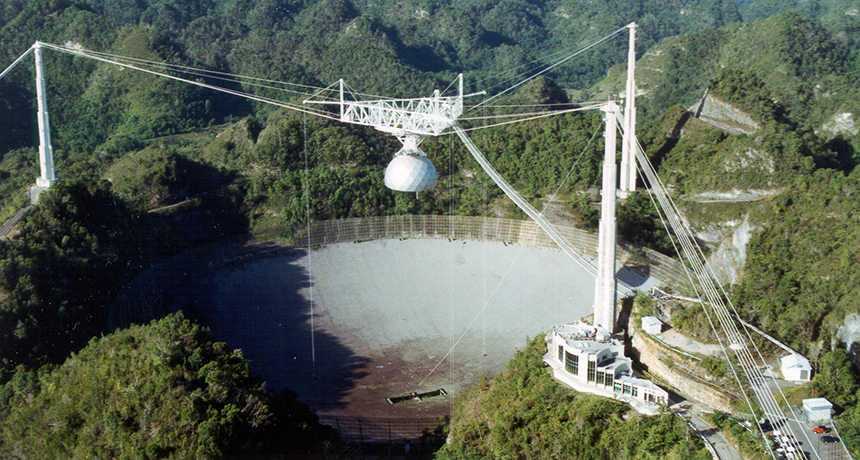alien A non-native organism. (in astronomy) Life on or from a distant world.
arXiv A website that posts research papers — often before they are formally published — in the fields of physics, mathematics, computer science, quantitative biology, quantitative finance and statistics. Anyone can read a posted paper at no charge.
astronomy The area of science that deals with celestial objects, space and the physical universe. People who work in this field are called astronomers.
broadcast To cast — or send out — something over a relatively large distance. A farmer may broadcast seeds by flinging them by hand over a large area. A loudspeaker may send sounds out over a great distance. An electronic transmitter may emit electromagnetic signals over the air to a distant radio, television or other receiving device. And a newscaster can broadcast details of events to listeners across a large area, even the world.
colleague Someone who works with another; a co-worker or team member.
cosmic An adjective that refers to the cosmos — the universe and everything within it.
E.T. (n.) An abbreviation made famous by the 1982 Universal Pictures movie, E.T. the Extra-Terrestrial. The main character was a charming space alien called E.T. His most famous line from the movie was “E.T. phone home.” E.T. has since come to be used as a colloquial term for any intelligent and potentially friendly space alien.
extraterrestrial (ET) Anything of or from regions beyond Earth.
factor Something that plays a role in a particular condition or event; a contributor.
frequency The number of times a specified periodic phenomenon occurs within a specified time interval. (In physics) The number of wavelengths that occurs over a particular interval of time.
physical (adj.) A term for things that exist in the real world, as opposed to in memories or the imagination. It can also refer to properties of materials that are due to their size and non-chemical interactions (such as when one block slams with force into another).
radio waves Waves in a part of the electromagnetic spectrum. They are a type that people now use for long-distance communication. Longer than the waves of visible light, radio waves are used to transmit radio and television signals. They also are used in radar.
random Something that occurs haphazardly or without reason, based on no intention or purpose.
range The full extent or distribution of something. For instance, a plant or animal’s range is the area over which it naturally exists. (in math or for measurements) The extent to which variation in values is possible. Also, the distance within which something can be reached or perceived.
seawater The salty water found in oceans.
SETI An abbreviation for “search for extraterrestrial intelligence,” meaning life on other worlds.
telescope Usually a light-collecting instrument that makes distant objects appear nearer through the use of lenses or a combination of curved mirrors and lenses. Some, however, collect radio emissions (energy from a different portion of the electromagnetic spectrum) through a network of antennas.
trillion A number representing a million million — or 1,000,000,000,000 — of something.
universe The entire cosmos: All things that exist throughout space and time. It has been expanding since its formation during an event known as the Big Bang, some 13.8 billion years ago (give or take a few hundred million years).
wave A disturbance or variation that travels through space and matter in a regular, oscillating fashion.








